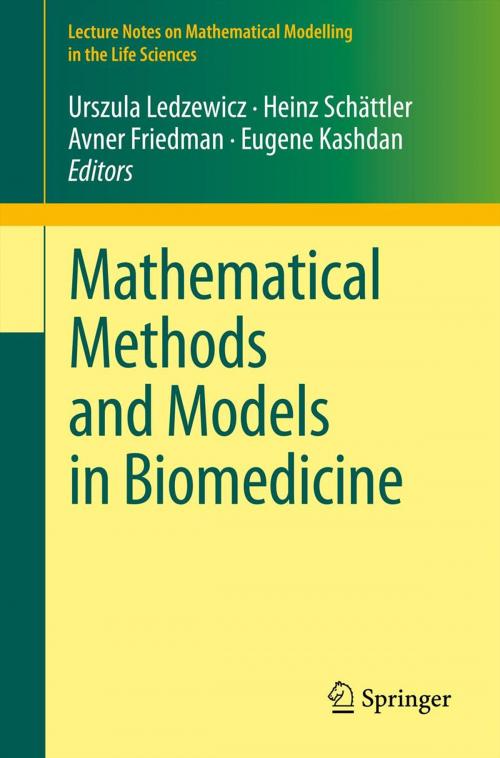Mathematical Methods and Models in Biomedicine
Nonfiction, Science & Nature, Mathematics, Applied, Science, Biological Sciences| Author: | ISBN: | 9781461441786 | |
| Publisher: | Springer New York | Publication: | October 20, 2012 |
| Imprint: | Springer | Language: | English |
| Author: | |
| ISBN: | 9781461441786 |
| Publisher: | Springer New York |
| Publication: | October 20, 2012 |
| Imprint: | Springer |
| Language: | English |
Mathematical biomedicine is a rapidly developing interdisciplinary field of research that connects the natural and exact sciences in an attempt to respond to the modeling and simulation challenges raised by biology and medicine. There exist a large number of mathematical methods and procedures that can be brought in to meet these challenges and this book presents a palette of such tools ranging from discrete cellular automata to cell population based models described by ordinary differential equations to nonlinear partial differential equations representing complex time- and space-dependent continuous processes. Both stochastic and deterministic methods are employed to analyze biological phenomena in various temporal and spatial settings. This book illustrates the breadth and depth of research opportunities that exist in the general field of mathematical biomedicine by highlighting some of the fascinating interactions that continue to develop between the mathematical and biomedical sciences. It consists of five parts that can be read independently, but are arranged to give the reader a broader picture of specific research topics and the mathematical tools that are being applied in its modeling and analysis. The main areas covered include immune system modeling, blood vessel dynamics, cancer modeling and treatment, and epidemiology. The chapters address topics that are at the forefront of current biomedical research such as cancer stem cells, immunodominance and viral epitopes, aggressive forms of brain cancer, or gene therapy. The presentations highlight how mathematical modeling can enhance biomedical understanding and will be of interest to both the mathematical and the biomedical communities including researchers already working in the field as well as those who might consider entering it. Much of the material is presented in a way that gives graduate students and young researchers a starting point for their own work.
Mathematical biomedicine is a rapidly developing interdisciplinary field of research that connects the natural and exact sciences in an attempt to respond to the modeling and simulation challenges raised by biology and medicine. There exist a large number of mathematical methods and procedures that can be brought in to meet these challenges and this book presents a palette of such tools ranging from discrete cellular automata to cell population based models described by ordinary differential equations to nonlinear partial differential equations representing complex time- and space-dependent continuous processes. Both stochastic and deterministic methods are employed to analyze biological phenomena in various temporal and spatial settings. This book illustrates the breadth and depth of research opportunities that exist in the general field of mathematical biomedicine by highlighting some of the fascinating interactions that continue to develop between the mathematical and biomedical sciences. It consists of five parts that can be read independently, but are arranged to give the reader a broader picture of specific research topics and the mathematical tools that are being applied in its modeling and analysis. The main areas covered include immune system modeling, blood vessel dynamics, cancer modeling and treatment, and epidemiology. The chapters address topics that are at the forefront of current biomedical research such as cancer stem cells, immunodominance and viral epitopes, aggressive forms of brain cancer, or gene therapy. The presentations highlight how mathematical modeling can enhance biomedical understanding and will be of interest to both the mathematical and the biomedical communities including researchers already working in the field as well as those who might consider entering it. Much of the material is presented in a way that gives graduate students and young researchers a starting point for their own work.















